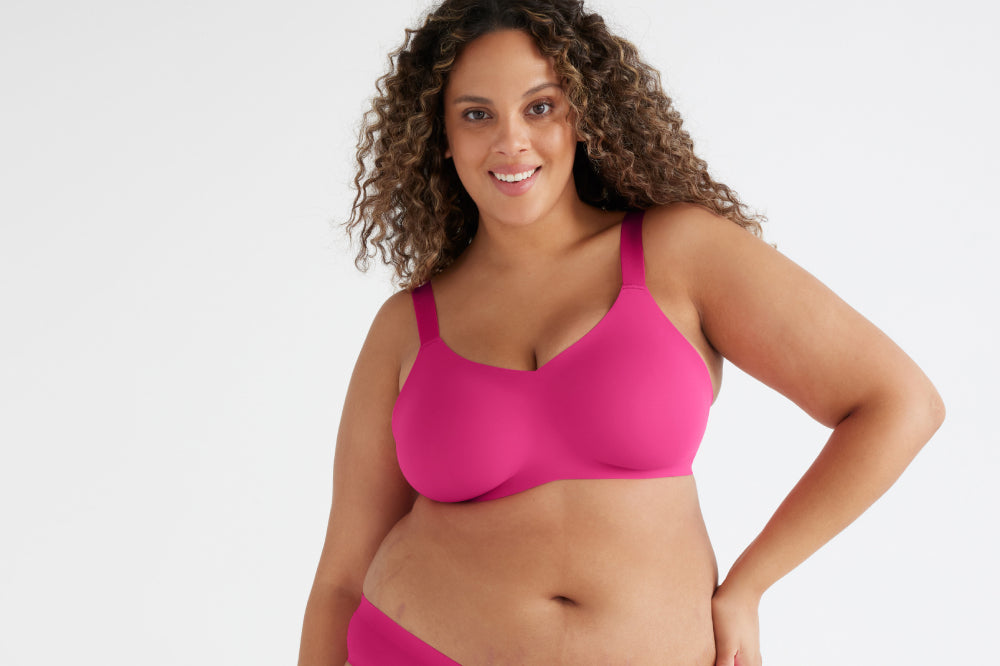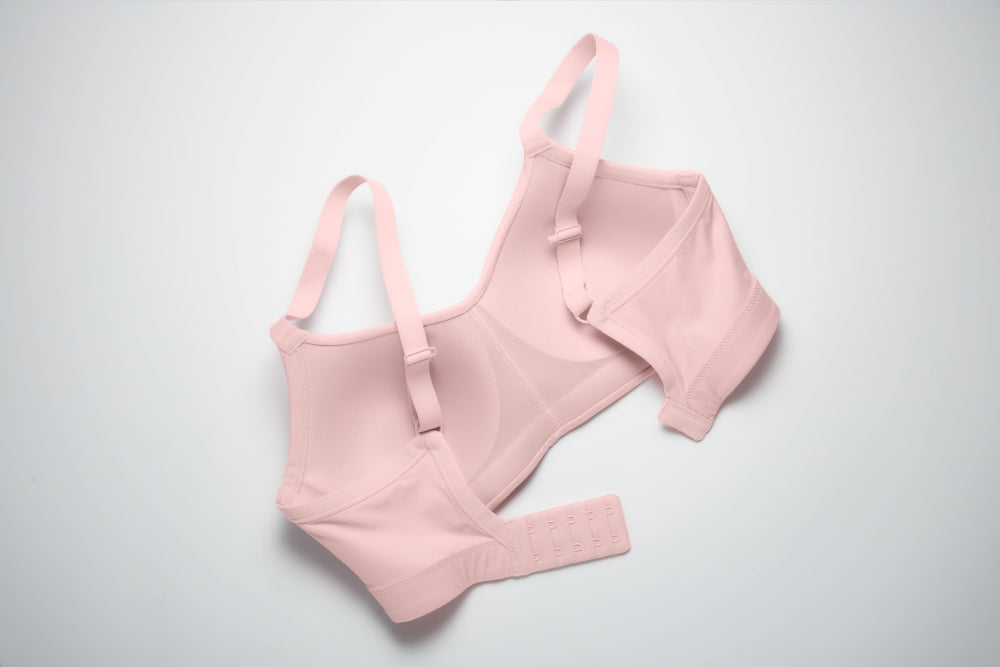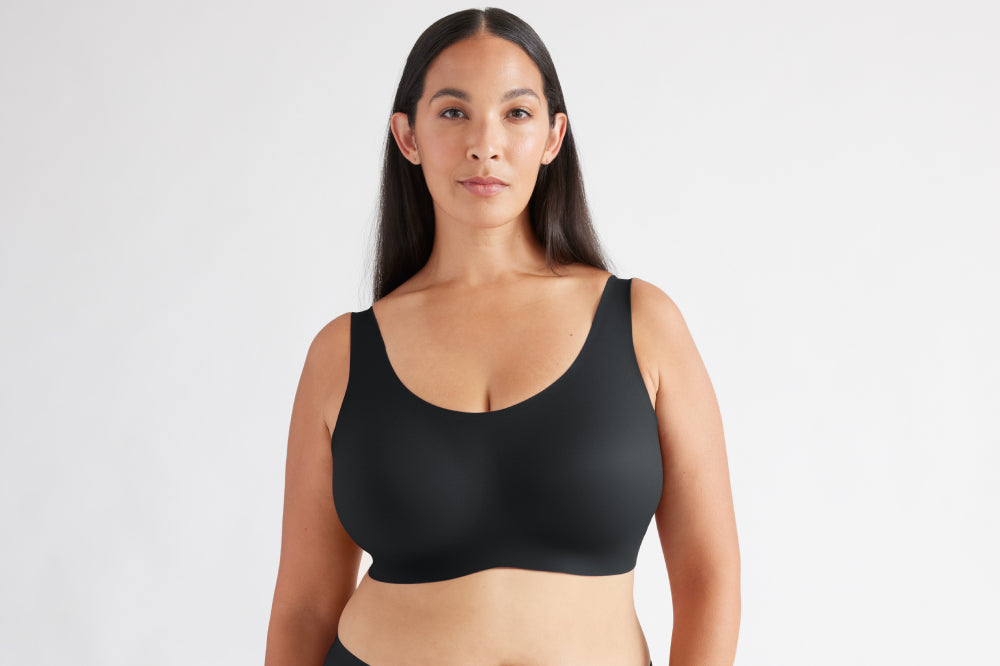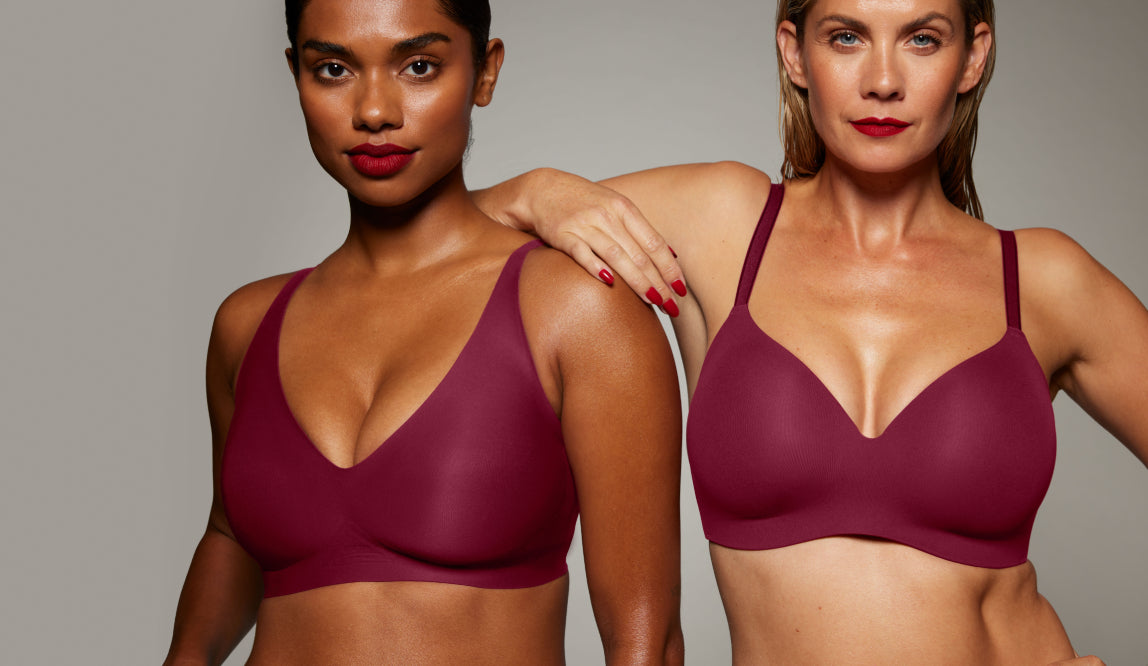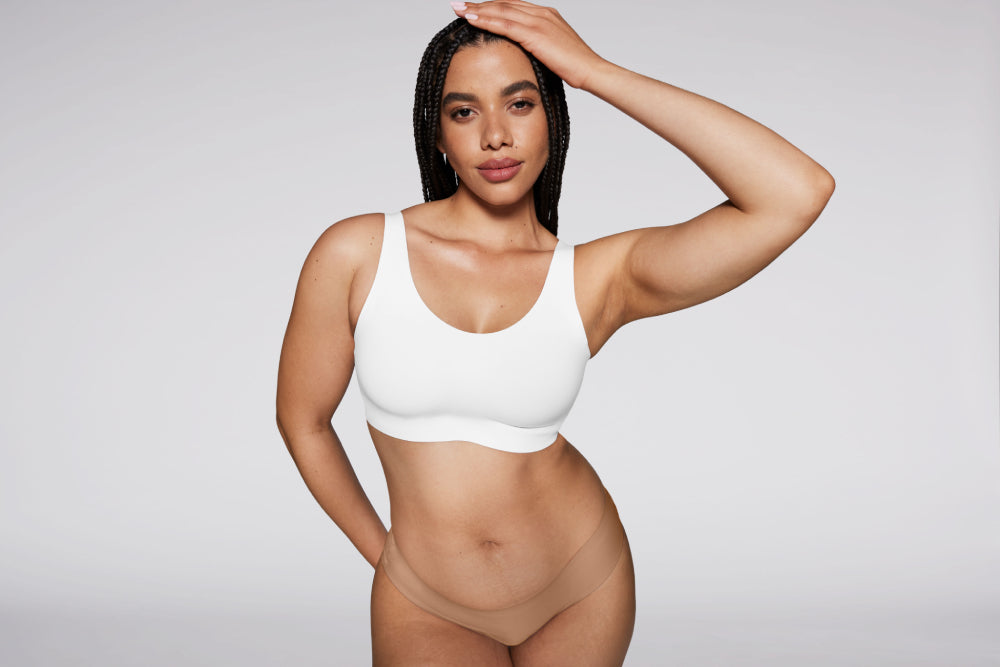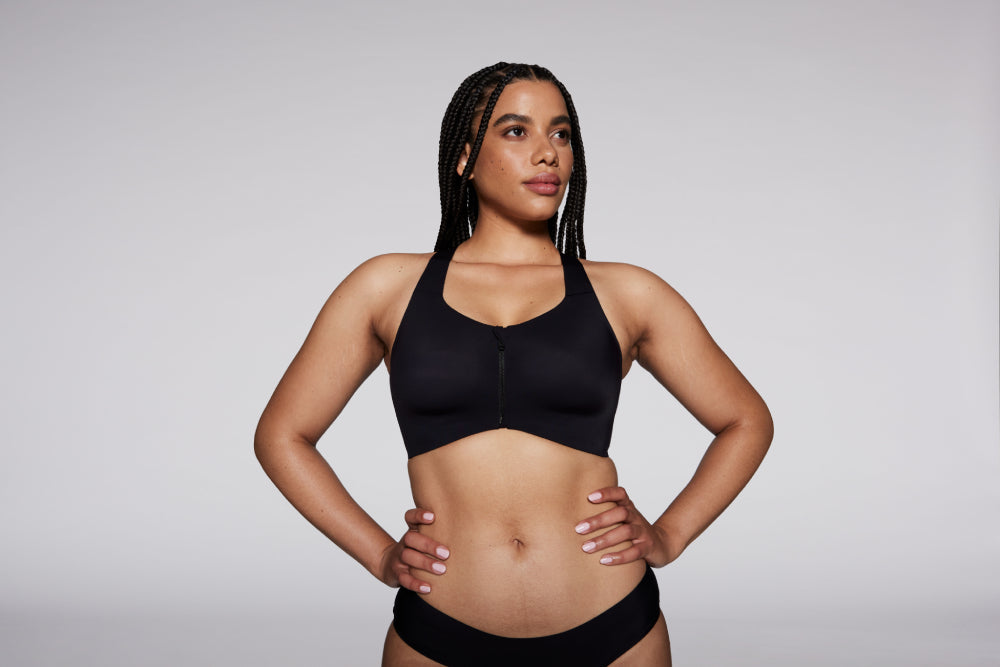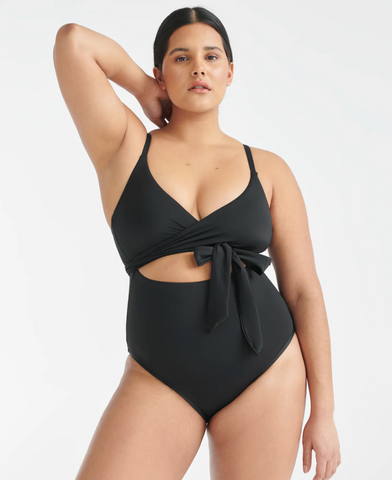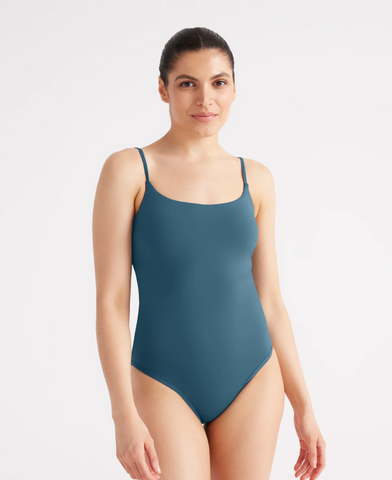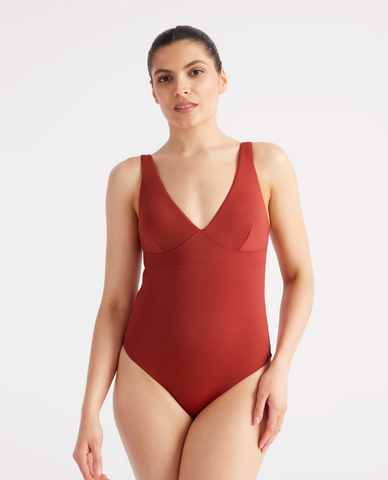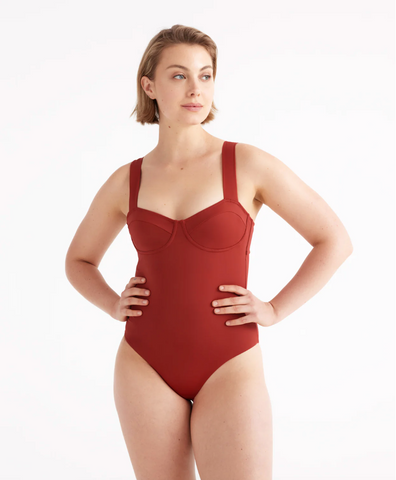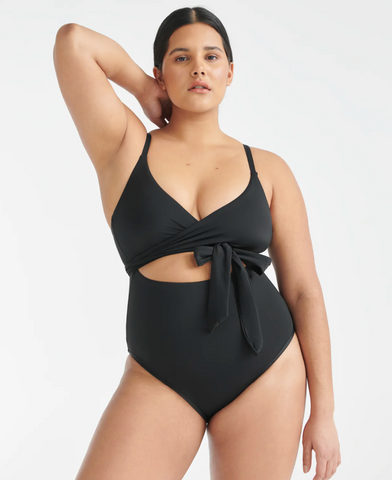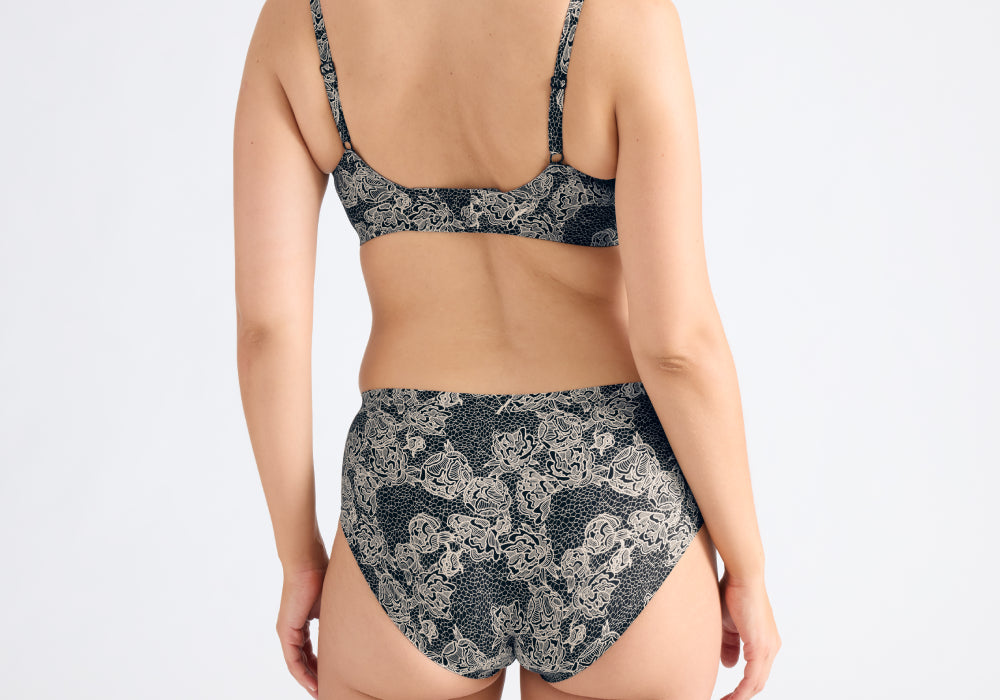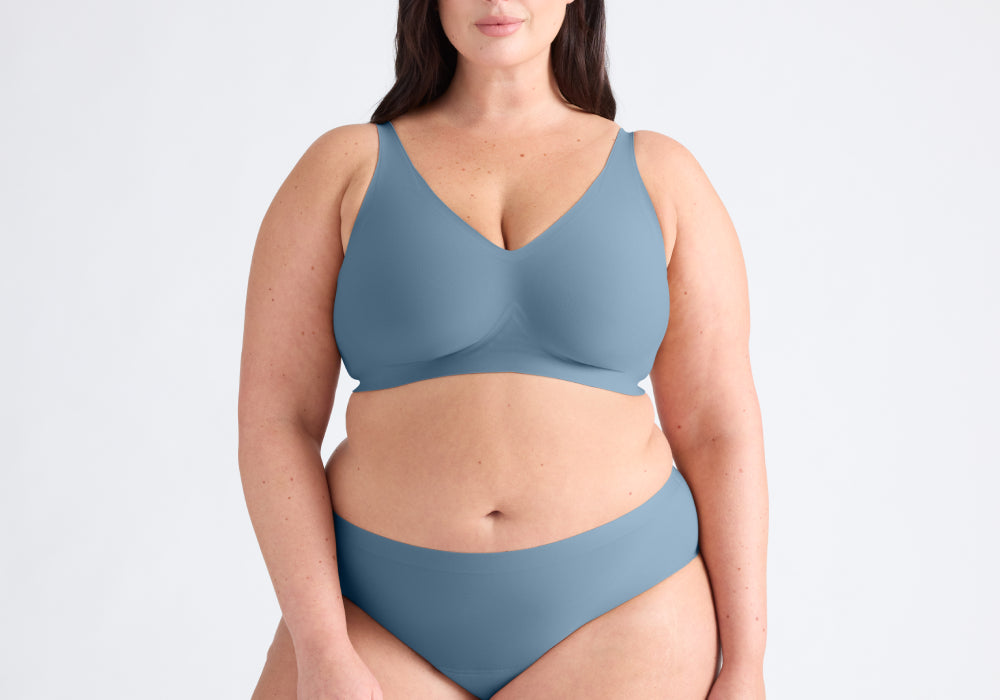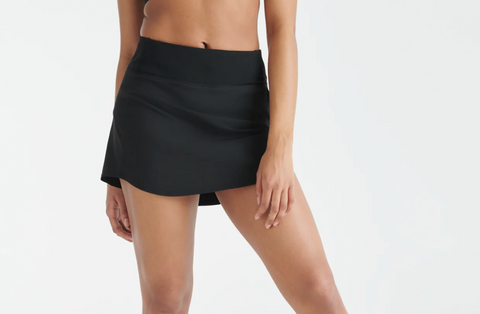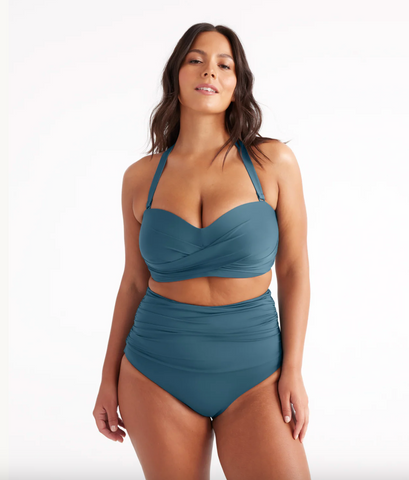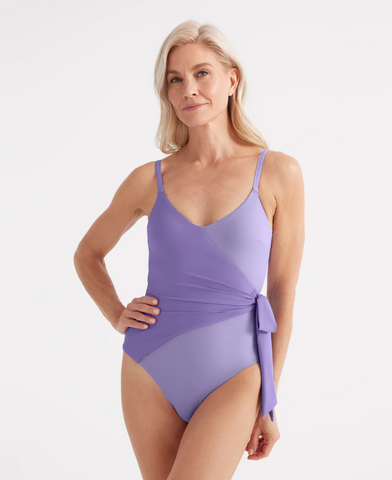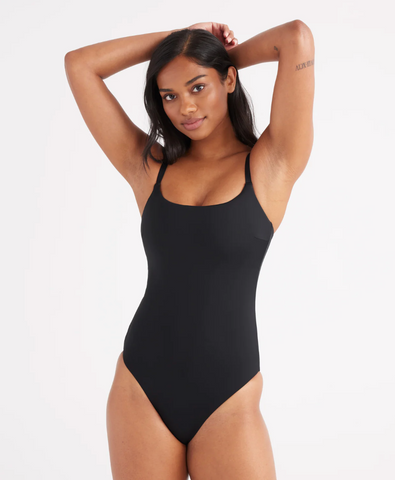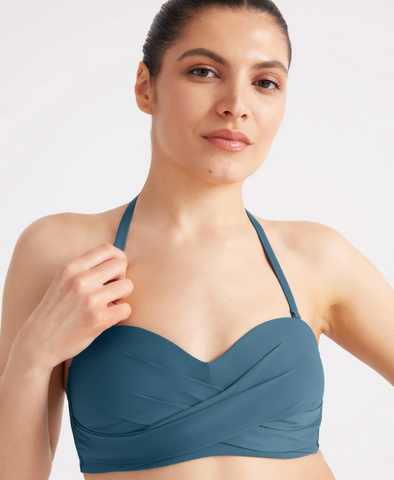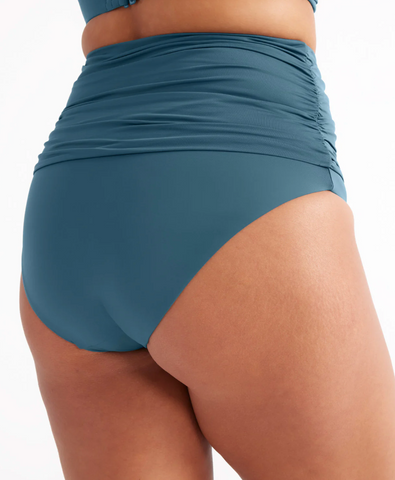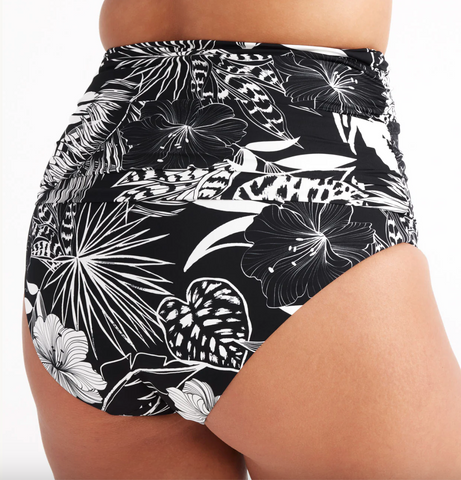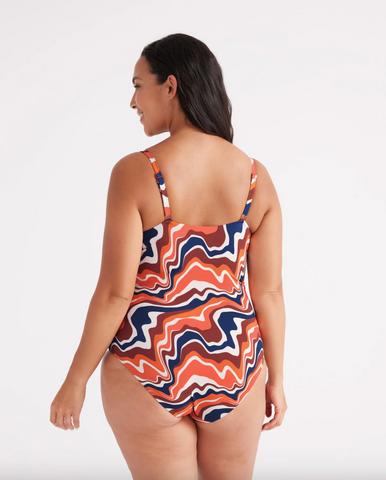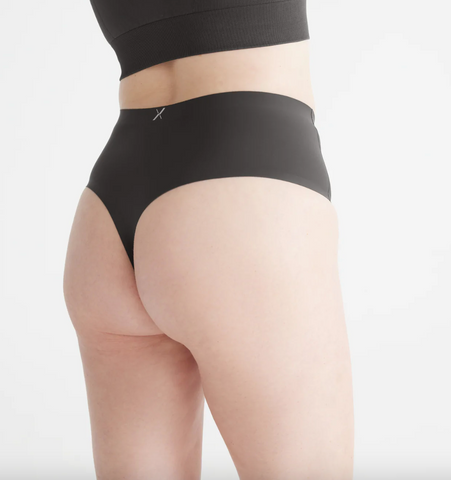It’s more than annoying; at the end of the day, there’s a red welt, and your shoulders and neck are killing you. A tension headache is on the horizon, all from your shoulder strap.
But it doesn’t have to be like that: there are a few reasons your bra may be digging, like narrow straps, an ill-fitting bra, or even that you’re wearing the wrong bra style for your unique shape.
Some simple solutions for alleviating the ache include choosing bras with wide straps, purchasing bras with different strap designs, and getting re-fitted. Let’s dive into it!
Why Your Shoulder Straps Dig in
The short answer is it really depends! You may be wearing the wrong size bra, which can contribute to more weight and pressure on your straps. Or you might be wearing the wrong bra style for your unique body! If you’re feeling the dig, check out which of the following reasons could be causing your shoulder pain.
You’re Wearing the Wrong Size
Here’s the thing: when you’re wearing the wrong size bra, you’re going to feel uncomfortable, your shoulders and neck included.
Your bra band is meant to provide the majority of support for your breasts, but when it’s too tight or too loose, it can’t do its job properly. This causes your shoulder straps to overcompensate, causing digging and extra pressure. Not only do your shoulders feel the impact, but you lack the lift and support your bra should be giving you.
If your cup size is too small, breasts may spill over, causing increased tension on the shoulder straps as they struggle to bear the excess weight. If your cup is too large, you may want to over tighten the straps to help the breasts fill the cup better.
This can add pressure to the soft tissues and muscles, restrict blood flow, and impede circulation in the shoulders and upper arms. Some folks have even experienced tingling and numbness from wearing straps that are too tight.
Shoulder Strap Woes
Sometimes, it’s simply the shoulder straps that are the problem! Narrow shoulder straps, while often chosen for their delicate and feminine appearance, can sometimes contribute to the notorious issue of straps digging into the shoulders.
The narrower the straps, the more concentrated the pressure points, leading to discomfort and, over time, potential pain. It's a delicate balance between aesthetics and functionality. You may want to consider a range of bras (some with slender straps, others with wider ones) that can be worn for different occasions and styles.
Adjustable straps are a practical solution for achieving a comfortable fit, but occasionally, missteps in their usage or fit can lead to discomfort. There are a few reasons why they may cause digging.
- Uneven adjustment: If one shoulder strap is tighter than the other, it can create an imbalance, potentially causing one side to dig into the shoulder.
- Incorrect length: Straps that are too short or too long may not sit comfortably on the shoulders, leading to potential digging or discomfort.
- Elasticity wear: Over time, the elasticity of adjustable straps may diminish, impacting their ability to maintain the desired length. This can lead to gradual tightening and discomfort.
Bra Style
While the right bra offers unparalleled support and comfort, the wrong style might leave you with the unwelcome sensation of shoulder strap digging. Understanding which bra styles may be more prone to this discomfort is valuable in finding the perfect fit for your body.
Here's a breakdown of bra styles that, if not tailored to your individual needs, could potentially lead to shoulder strap digging:
- Racerback bra: While racerback bras can provide excellent support and a unique look, the design of the straps converging at the back can sometimes increase pressure on the shoulders, leading to potential digging. This is especially true if the straps are thin rather than thick and joined.
- Balconette or demi bra: These styles often have shorter and more widely set shoulder straps. If you have narrow or sloping shoulders, this bra style may easily slip off and cause discomfort.
- Sports Bra with tension straps: Some high-impact sports bras may have tension-inducing straps that, if not adjusted correctly, can contribute to discomfort and digging.
- Bralette: While bralettes are known for their comfort, some styles may lack the structured support needed to distribute the weight evenly. This can lead to increased pressure on the straps and potential digging.
- Underwire Bra: While an underwired bra often provides great support and lift, it can dig into the shoulders if the band isn't sitting snugly against the ribcage.
- Strapless Bra: A strapless bra relies primarily on the band to provide support since there aren't any straps. You may find yourself constantly adjusting a strapless bra to prevent it from slipping, which causes strain or lacks support.
Sloping Shoulders
Sloping shoulders refers to shoulders that angle downwards from the neck to the outside of the arms. Bra straps slide down your shoulder more easily. This can be particularly problematic if the straps are not adjusted properly or the bra design doesn't accommodate you.
Bras like racerback bras or wide-set strapped balconette bras may not be super accommodating to sloping shoulders. If the straps are set too wide or at an angle that doesn't align with the natural slope of the shoulders, they may dig into the skin rather than resting comfortably on the shoulders.
Narrow Shoulders
Narrow shoulders often mean a shorter distance between them. This can lead to straps slipping off more frequently, disrupting the proper alignment of the bra. Straps that continuously slip can result in the need for constant readjustment, impacting overall comfort.
With a shorter distance to cover, bra straps designed for a broader shoulder span may be too long for those with narrow shoulders. As a result, the excess length can lead to digging into the skin, causing discomfort and irritation. This issue is particularly common if the bra's design doesn't account for variations in shoulder width.
Larger Bust
It’s basic (girl) math: If you have larger breasts, your straps have more to support. While your bra band should provide the most support, the straps play an important role too! Thin straps can mean more pressure points and less evenly distributed weight.
You may even experience bra strap syndrome. According to research, this is when tight, narrow straps dig into the shoulders leading to shoulder stiffness, tenderness, and even tingling hands. Folks with larger bodies or larger breasts may be at a greater risk.
One of the easiest ways to reduce your risk is to wear bras with wide straps!
Best Ways to Get Rid of Digging Shoulder Straps
Now that you understand why your straps are digging, here are some simple solutions.
Get Resized
The often-overlooked solution to alleviating the nagging issue of digging bra straps lies in a seemingly simple yet transformative step: getting resized. While it may seem counterintuitive, the wrong cup or band size means more strain on the straps.
Ultimately, you'll feel more comfortable and confident wearing the right size. That’s why it’s important to retake your measurements or, better still, get professionally fitted by bra specialists to ensure you’re in the right bra size!
Choose Wider Straps
It may be as simple as choosing bras with wider straps to help reduce shoulder digging and discomfort. Why? Wider straps mean a more even weight distribution across the shoulders and fewer pressure points they can dig into.
Plus, there’s lots to love about a wide strap; for example, they provide more support for larger chests, stability, and reduce the risk of slipping. If you have narrow or sloping shoulders, wide straps may be a better fit for you since their width provides a more secure anchor, making them less likely to slide.
Choose a Different Bra Style
While the type of bra that suits you best will depend on your personal preference and your unique body, some bra styles are designed to minimize digging. Consider the following:
- T-Shirt Bra: Many t-shirt bras feature wider straps than other bra styles. The broader straps help distribute the weight of the breasts more evenly across the shoulders, reducing the pressure on a specific area and minimizing the risk of digging.
- Sports Bra: Often designed with wide straps to support movement, sports bras are a great choice for minimizing shoulder strain.
- Wire-Free Bra: Without the constraints of underwire, a wireless bra relies on a combination of fabric and strategic construction for support. This design helps distribute the weight of the breasts more evenly across the entire cup, minimizing concentrated pressure points on the shoulders and reducing the likelihood of digging.
Three Best Shoulder-Friendly Bras for Pain-Free Support
Painful shoulders? Here are some of the best bras that will support and lift without adding any extra aches.
Best Wide Strapped Bra: Padded V-Neck Bra
The Padded V-neck Bra is the obvious choice for folks battling shoulder pain from their straps. The wide straps provide extra support, while a plunge neckline makes this perfect for everyday wear. Available in cup sizes A through F.
What reviewers say:
"I like the wide straps & feel like it can look like tank top straps for a layered look for summer."
"I love the comfort of the wide strap, even though I wear a relatively small size."
Super Supportive Bra for Getting a Sweat On: Momenta Racerback Sports Bra
So you want to look cute and comfortable at the gym? Designed with a racerback cut without the digging of convertible straps, the Momenta Racerback Sports Bra has ample support without the digging. This full-coverage bra has built-in padded cups for extra cushioning and no clasps or fastening hooks for a smooth feel.
What reviewers say:
"Holy smokes, I love this bra! It’s been great for running and weight training. I bought it slightly smaller to keep the girls in place, but I love it. Will probably buy another!"
"I'm a size 38G, and I have difficulty finding bras that fit correctly and provide support, so I am very impressed with this product. Most supportive and comfortable bra I have ever worn."
Most Comfortable Bra for Everyday Wear: Revolution Adjustable Pullover Bra
Made with soft, buttery fabric, you won't want to take off the Revolution Adjustable Pullover Bra. This wireless bra has adjustable straps for a customizable fit and will give you a lovely natural shape to your bust. Easy to wear with no back closures, making you feel like you're not wearing anything. Basically, it's the perfect bra!
What reviewers say:
"Beautifully made and so comfortable! I am incredibly impressed with the attention to detail...it feels custom-made for me."
Ditch Discomfort, Time for Something New
Imagine this: Your bra isn’t a nagging distraction. Your shoulder straps don’t leave welts and make your body ache. Wearing a well-fitting bra makes you feel more confident and comfortable in your clothes. And remember, just because you're more supported doesn't mean you have to shy away from stylish bras!
Simple changes like wearing the right bra size or choosing a wider strap can make a difference. Embracing a different style, like a t-shirt bra or sports bra, can mean you don’t end your day racing to rip off your bra. Choose the best bra for you based on our suggestions below.
]]>